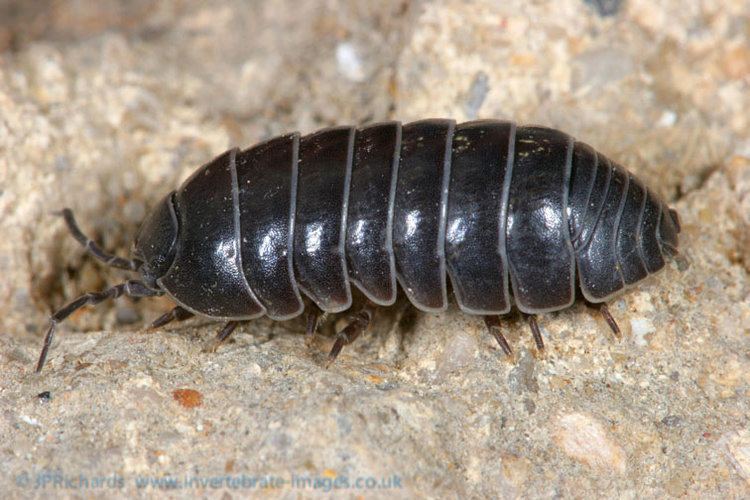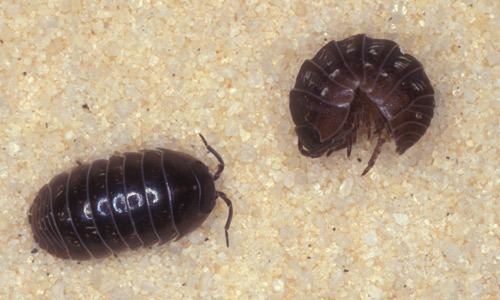Higher classification Pill bugs Rank Genus | Suborder Oniscidea Scientific name Armadillidium Order Isopods | |
 | ||
Lower classifications Armadillidium vulgare, Armadillidium pictum | ||
Adult and juvenile zebra pillbugs armadillidium maculatum
Armadillidium /ɑːrmədᵻˈlɪdiəm/ is a genus of the small terrestrial crustacean known as the woodlouse. Armadillidium are also commonly known as pill woodlice, leg pebbles, pill bugs, roly-poly, or potato bugs, and are often confused with pill millipedes such as Glomeris marginata. They are characterised by their ability to roll into a ball when disturbed. They typically feed on moss, algae, bark and other decaying organic matter. They are usually found in moist areas such as decomposing leaf matter and soil. Armadillidium vulgare is the most abundant species in Europe and has been introduced worldwide. However, the vast majority of species are endemic to small regions close to the Mediterranean Sea, in much lower numbers than common species such as A. vulgare, and hence are understudied.
Contents
- Adult and juvenile zebra pillbugs armadillidium maculatum
- Intelligence of an insect armadillidium vulgare
- References

The colouration especially of young A. klugii resembles the red hourglass marking of the Mediterranean black widow Latrodectus tredecimguttatus. This is probably a kind of mimicry, to ward off predators that mistake the harmless animal for a venomous spider.

Unlike other terrestrial arthropods such as insects and spiders, pill bugs do not have a waxy cuticle that would reduce evaporation from their bodies. Pill bugs also use modified lungs, called pseudotrachea, for respiration, and the lungs must remain moist to function. Individual pill bugs typically live for two or three years, and females brood eggs once or twice each summer. Several hundred eggs are brooded at a time in the marsupium, a pocket on the ventral side of the female pill bug. The marsupium must also be kept filled with water until the young hatch and crawl away.

Intelligence of an insect armadillidium vulgare
There are 178 recognised species in the genus Armadillidium:


